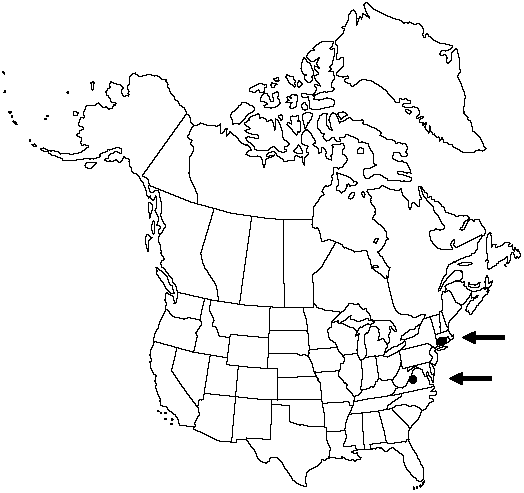Leaves 2-pinnate; petioles ca. 1/3–1/2 length of blades, not winged, with light-brown hairs, becoming glabrate. Sterile leaves ovate to ovatelanceolate, 0.50–0.75 m; pinnae lanceolate, lacking persistent tuft of hairs at base; pinnules sessile, base narrowly adnate to costae, margins nearly entire, apex obtuse to acute. Fertile leaves with greatly reduced, sporangia-bearing pinnae at apex, midleaf, or both, or comprising most of leaf, notably smaller than sterile leaves. (Fertile leaves not known from natural populations). 2n = 44.
Phenology: Sporulation late spring–early summer.
Habitat: 650 m
Discussion
Osmunda ruggii is a sterile, natural hybrid between O. claytoniana and O. regalis and one of only two interspecific hybrids known to occur in Osmundaceae. This nothospecies is known from two natural populations despite the widespread sympatry of parental stocks. The first reported population in Fairfield County, Connecticut, has not been relocated and is most likely extirpated. A single natural population is known to exist in Craig County, Virginia; it is estimated that its age could be greater than 1100 years.
Selected References
None.
Lower Taxa
"in" is not a number."/3lengthofblades" is not declared as a valid unit of measurement for this property.
